Survey or Interview光冨 徹哉
外科も内科も重なり合う
肺がんのスペシャリストを
A lung cancer specialist bridging both surgery and internal medicine.
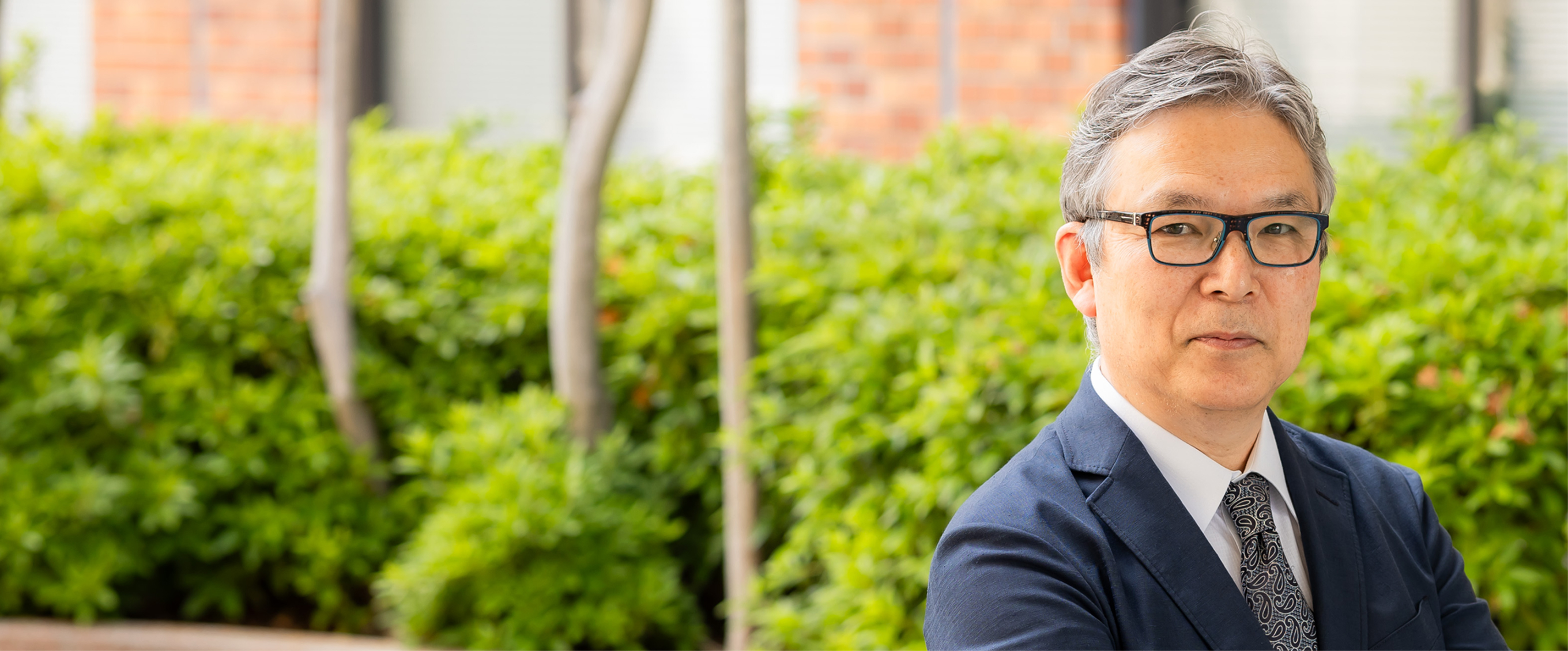
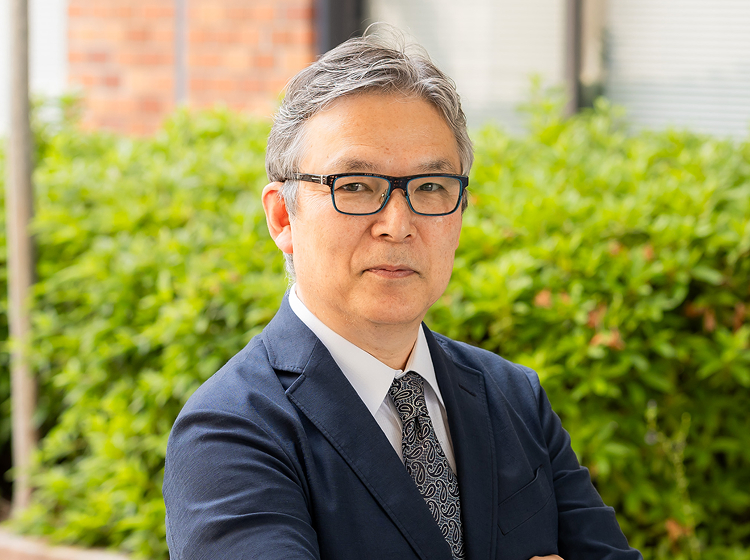
光冨 徹哉
MITSUDOMI Tetsuya
特別招聘研究教授
Specially Invited Professor
医療の分野で内科と外科が分化したのは、中世ヨーロッパだと言われている。大学で学問を修めた医師は、医学理論と内科を担当。外科手術は理髪師を兼ねていた理髪外科医が行ったという。外科よりも内科が外科よりもアカデミック(学問的)であり〝高位〟に位置づけられていたようだ。
もちろん今では、〝上下〟はない。ただ、気質の差は残っている。
近畿大学特別招聘研究教授の光冨徹哉は、「ぼくが外科に行ったことにみんな意外だったようです」と冗談交じりに言う。
光冨は1955年に父親が勤務していた九州大学病院で生まれた。父は第1内科で結核を専門としていた医師だった。
「周りからお前も医者になるんだろうという目で見られることが嫌だという時期もありました。それでもやはり父親の影響でしょうね。人の命を救うと言うことに魅力を感じて医学部に進むことにしました」
九州大学医学部卒業時に進路を決める時期になったとき、選択肢に上がったのは父の所属していた第1内科と第2外科だった。
「第1内科の先生たちは、光冨先生の息子なので、当然来るものだと思っているのは分かりました。同級生からも当然、私は内科に行くものだと思われていたと思います」
外科医と内科医の違いについて「考えるより先に手が動くのが外科医、よく考えるが手を動かすのがおそいのが内科医」などと冗談めかしていわれますが、ぼくは後者だと思われていたみたいですと笑う。
「ただ、サッカー部の部長が第2外科の教授だったこともあり、先輩も沢山、第2外科に入っていました。かなり迷ったんですけれど、最終的には〝部活〟が勝ったことになります」
九州大学医学部第2外科は1904年設立。主に消化器を扱う歴史ある診療科である。呼吸器外科——肺がんを専門としたのは、教授の勧めというより命令だった。
「卒後9年目に専攻を決めるときに胃がんはやる人が多かったので、肝臓、食道など特殊な消化器をやりたいと言ったのに、呼吸器がいいぞと言われてそのまま進むことになってしまいました」
肺がんは、気管支や肺胞から発生するがんである。比較的進行がゆっくりな非小細胞肺がんと、増殖が早く転移しやすい小細胞肺がんの2つに分けられる。いずれにも喫煙が大きく関与しています。外科手術の対象は、主に非小細胞肺がんだ。
「最も治りにくいがん、とまでは言わないですが、他のがんと比べて、総体的に治りにくい。手術が上手く終わったと思っても、まもなく再発転移がおこることも多い。転移の傾向が強いがんといえると思います」
もちろん今では、〝上下〟はない。ただ、気質の差は残っている。
近畿大学特別招聘研究教授の光冨徹哉は、「ぼくが外科に行ったことにみんな意外だったようです」と冗談交じりに言う。
光冨は1955年に父親が勤務していた九州大学病院で生まれた。父は第1内科で結核を専門としていた医師だった。
「周りからお前も医者になるんだろうという目で見られることが嫌だという時期もありました。それでもやはり父親の影響でしょうね。人の命を救うと言うことに魅力を感じて医学部に進むことにしました」
九州大学医学部卒業時に進路を決める時期になったとき、選択肢に上がったのは父の所属していた第1内科と第2外科だった。
「第1内科の先生たちは、光冨先生の息子なので、当然来るものだと思っているのは分かりました。同級生からも当然、私は内科に行くものだと思われていたと思います」
外科医と内科医の違いについて「考えるより先に手が動くのが外科医、よく考えるが手を動かすのがおそいのが内科医」などと冗談めかしていわれますが、ぼくは後者だと思われていたみたいですと笑う。
「ただ、サッカー部の部長が第2外科の教授だったこともあり、先輩も沢山、第2外科に入っていました。かなり迷ったんですけれど、最終的には〝部活〟が勝ったことになります」
九州大学医学部第2外科は1904年設立。主に消化器を扱う歴史ある診療科である。呼吸器外科——肺がんを専門としたのは、教授の勧めというより命令だった。
「卒後9年目に専攻を決めるときに胃がんはやる人が多かったので、肝臓、食道など特殊な消化器をやりたいと言ったのに、呼吸器がいいぞと言われてそのまま進むことになってしまいました」
肺がんは、気管支や肺胞から発生するがんである。比較的進行がゆっくりな非小細胞肺がんと、増殖が早く転移しやすい小細胞肺がんの2つに分けられる。いずれにも喫煙が大きく関与しています。外科手術の対象は、主に非小細胞肺がんだ。
「最も治りにくいがん、とまでは言わないですが、他のがんと比べて、総体的に治りにくい。手術が上手く終わったと思っても、まもなく再発転移がおこることも多い。転移の傾向が強いがんといえると思います」
The patient must always be at the center. Even surgeons need not only surgical skills but also knowledge of pharmacological treatments.
In the field of medicine, the division between internal medicine and surgery is said to have originated in medieval Europe. Physicians who studied at universities were responsible for medical theory and internal medicine, while surgical operations were performed by barber-surgeons, who also worked as barbers. At the time, internal medicine was regarded as more academic and thus ranked “higher” than surgery.Of course, such a “hierarchy” no longer exists today. However, differences in temperament between the two fields remain.
MITSUDOMI Tetsuya, now a Specially Invited Professor at Kindai University Faculty of Medicine, reflects with a wry smile, “Everyone seemed surprised that I went into surgery.”
MITSUDOMI was born in 1955 at Kyushu University Hospital, where his father was working. His father was a physician in the First Department of Internal Medicine, specializing in tuberculosis.
“There was a time when I disliked the way people around me assumed I would also become a doctor. Still, I suppose it was my father’s influence. The idea of saving lives, of helping people, had a certain appeal. That’s what led me to enter medical school.”
When the time to choose a career path upon graduating from the Kyushu University Faculty of Medicine, two options were before him: the First Department of Internal Medicine, where his father had belonged, and the Second Department of Surgery.
“I could sense that the professors of the First Department of Internal Medicine naturally expected me to join them, being the son of Dr. Mitsudomi. I think my classmates also took it for granted that I would go into internal medicine,” he recalls.
As for the difference between surgeons and internists, he laughs, “It’s often said half-jokingly that surgeons move their hands before thinking, while internists think carefully but are slow to act. I think people saw me as the latter.”
“But,” he adds, “the captain of the soccer club was a professor in the Second Department of Surgery, and many of my seniors had gone there. I agonized over the choice, but in the end, my club activities tipped the scales.”
The Second Department of Surgery at Kyushu University Faculty of Medicine, founded in 1904, was a historic department that primarily treated gastrointestinal diseases. As for why he specialized in thoracic surgery—lung cancer in particular—it was not so much a recommendation as an order from his professors.
“When it came time to choose my specialty in my ninth year after graduation, many were already working on gastric cancer. I said I wanted to tackle something more unusual, like the liver or esophagus. But they told me, ‘Thoracic surgery is the way to go,’ and that was that.”
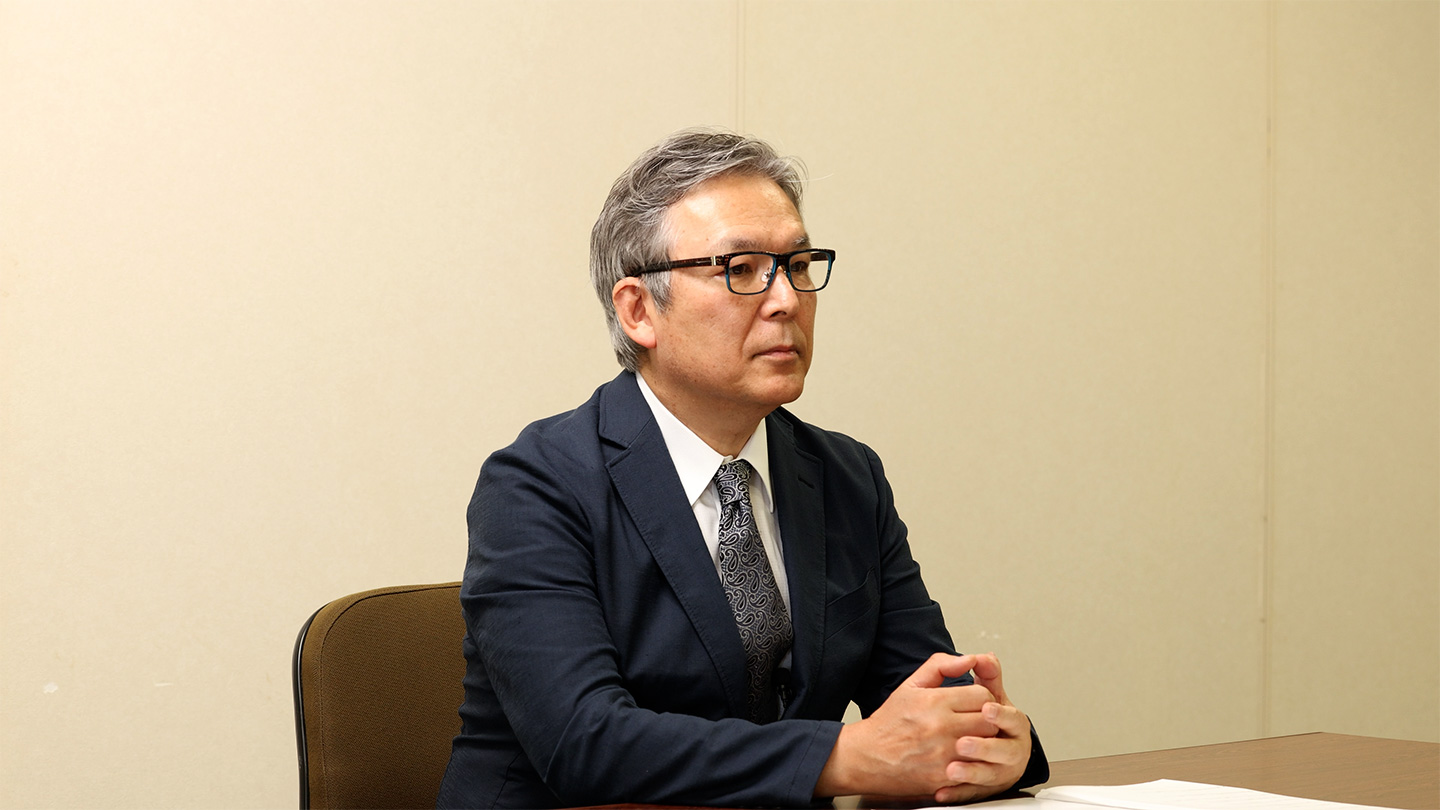
1989年、光冨はアメリカのメリーランド州にある国立衛生研究所(NIH)の国立がん研究所(NCI)に留学している。
まず圧倒されたのは、物資が豊富だったことだ。
「アメリカの景気が良かったせいかもしれませんが、実験器具や試薬など欲しいものはどんどん買ってくれました。世界中から同年代の研究者が集まっていて、すごく楽しかった」
NCIでは、基礎研究を臨床に役立てるという今で言う「トランスレーショナル・リサーチ」(橋渡し研究)に力を入れていた。光冨が主に取り組んだのはPCRを用いて肺癌の遺伝子異常をしらべることだった。PCRはポリメラーゼ連鎖反応の略で、DNAの特定の配列を狙って増幅する技術である。
「それまではがん細胞の遺伝子に突然変異があるかを調べるのは大変でした。PCRが出てきたことで、短時間に多くの検体のデータを取ることができるようになりました。そこでKRAS遺伝子、P53遺伝子などの異常の臨床的意義を調べることができるようになりました」
KRAS遺伝子は、ヒトの第12番染色体にあるRAS遺伝子の1つだ。KRASは、細胞増殖のアクセルの役割を果たす。KRAS遺伝子に突然変異が起こり、スイッチが常に入る状態になると、細胞が増殖し続け、がんになる。肺がんにおいては15〜30パーセントがKRAS変異が原因とされている。
一方、P53遺伝子は、腫瘍抑制遺伝子とも呼ばれる。KRASとは逆に細胞増殖のブレーキ役を果たすと考えられている。このP53遺伝子に変異が起こると、こんどはブレーキがこわれて細胞増殖の暴走がおこるというわけである。現在では、全てのがんの半数以上でP53遺伝子の変異が認められることが分かっている。
〝外科〟でありながら、こうした〝内科〟的な研究に携わったことが、光冨の人生に大きな影響を与えることになった。
まず圧倒されたのは、物資が豊富だったことだ。
「アメリカの景気が良かったせいかもしれませんが、実験器具や試薬など欲しいものはどんどん買ってくれました。世界中から同年代の研究者が集まっていて、すごく楽しかった」
NCIでは、基礎研究を臨床に役立てるという今で言う「トランスレーショナル・リサーチ」(橋渡し研究)に力を入れていた。光冨が主に取り組んだのはPCRを用いて肺癌の遺伝子異常をしらべることだった。PCRはポリメラーゼ連鎖反応の略で、DNAの特定の配列を狙って増幅する技術である。
「それまではがん細胞の遺伝子に突然変異があるかを調べるのは大変でした。PCRが出てきたことで、短時間に多くの検体のデータを取ることができるようになりました。そこでKRAS遺伝子、P53遺伝子などの異常の臨床的意義を調べることができるようになりました」
KRAS遺伝子は、ヒトの第12番染色体にあるRAS遺伝子の1つだ。KRASは、細胞増殖のアクセルの役割を果たす。KRAS遺伝子に突然変異が起こり、スイッチが常に入る状態になると、細胞が増殖し続け、がんになる。肺がんにおいては15〜30パーセントがKRAS変異が原因とされている。
一方、P53遺伝子は、腫瘍抑制遺伝子とも呼ばれる。KRASとは逆に細胞増殖のブレーキ役を果たすと考えられている。このP53遺伝子に変異が起こると、こんどはブレーキがこわれて細胞増殖の暴走がおこるというわけである。現在では、全てのがんの半数以上でP53遺伝子の変異が認められることが分かっている。
〝外科〟でありながら、こうした〝内科〟的な研究に携わったことが、光冨の人生に大きな影響を与えることになった。
Translational research is the ‘bridge’ between basic science and clinical practice.
Lung cancer arises from the cells of the bronchi or alveoli. It is broadly divided into two types: non-small cell lung cancer, which tends to progress relatively slowly, and small cell lung cancer, which grows quickly and tends to metastasize. Both are strongly associated with smoking. Surgical treatment is primarily indicated for non-small cell lung cancer.“It may not be the most incurable cancer,” MITSUDOMI explains, “but compared with other cancers, overall, it is indeed difficult to treat. Even when surgery seems to go well, recurrence and metastasis often occur soon after. It is, I think, a cancer with a particularly strong tendency to spread.”
In 1989, MITSUDOMI traveled to the United States, to the National Cancer Institute (NCI) at the National Institutes of Health (NIH) in Maryland. What struck him first was the sheer abundance of resources.
“Perhaps it was because the U.S. economy was booming at the time, but whenever I needed laboratory equipment or reagents, they bought them without hesitation. Researchers of my generation had gathered there from all over the world, and it was incredibly exciting,” he recalls.
At NCI, great emphasis was placed on what today is called translational research—bridging basic science with clinical applications. MITSUDOMI’s primary focus was using PCR to investigate genetic abnormalities in lung cancer. PCR, short for polymerase chain reaction, is a technique used to selectively amplify specific DNA sequences.
“Until then, examining whether cancer cells carried genetic mutations was an arduous process. With the advent of PCR, however, it became possible to obtain data from a large number of samples in a short period of time. This allowed us to investigate the clinical significance of abnormalities in genes such as KRAS and P53,” he explains.
The KRAS gene, one of the RAS genes located on human chromosome 12, functions as an accelerator for cell proliferation. When mutations occur, the switch is stuck in the ‘on’ position, driving uncontrolled proliferation that leads to cancer. In lung cancer, KRAS mutations are thought to be the cause in 15–30 percent of cases.
The P53 gene, on the other hand, is often referred to as a tumor suppressor gene. In contrast to KRAS, it acts as a brake on cell proliferation. When P53 undergoes mutation, that brake fails, leading to uncontrolled cell growth. Today, it is understood that more than half of all cancers involve mutations in the P53 gene.
Though a surgeon by training, MITSUDOMI’s involvement in this kind of “internal medicine”-like research profoundly influenced the course of his life.
After returning to Japan, he served as Associate Professor of Thoracic Surgery at Kyushu University Faculty of Medicine, and in 1995 he became Director of the Department of Thoracic Surgery at the Aichi Cancer Center Hospital.
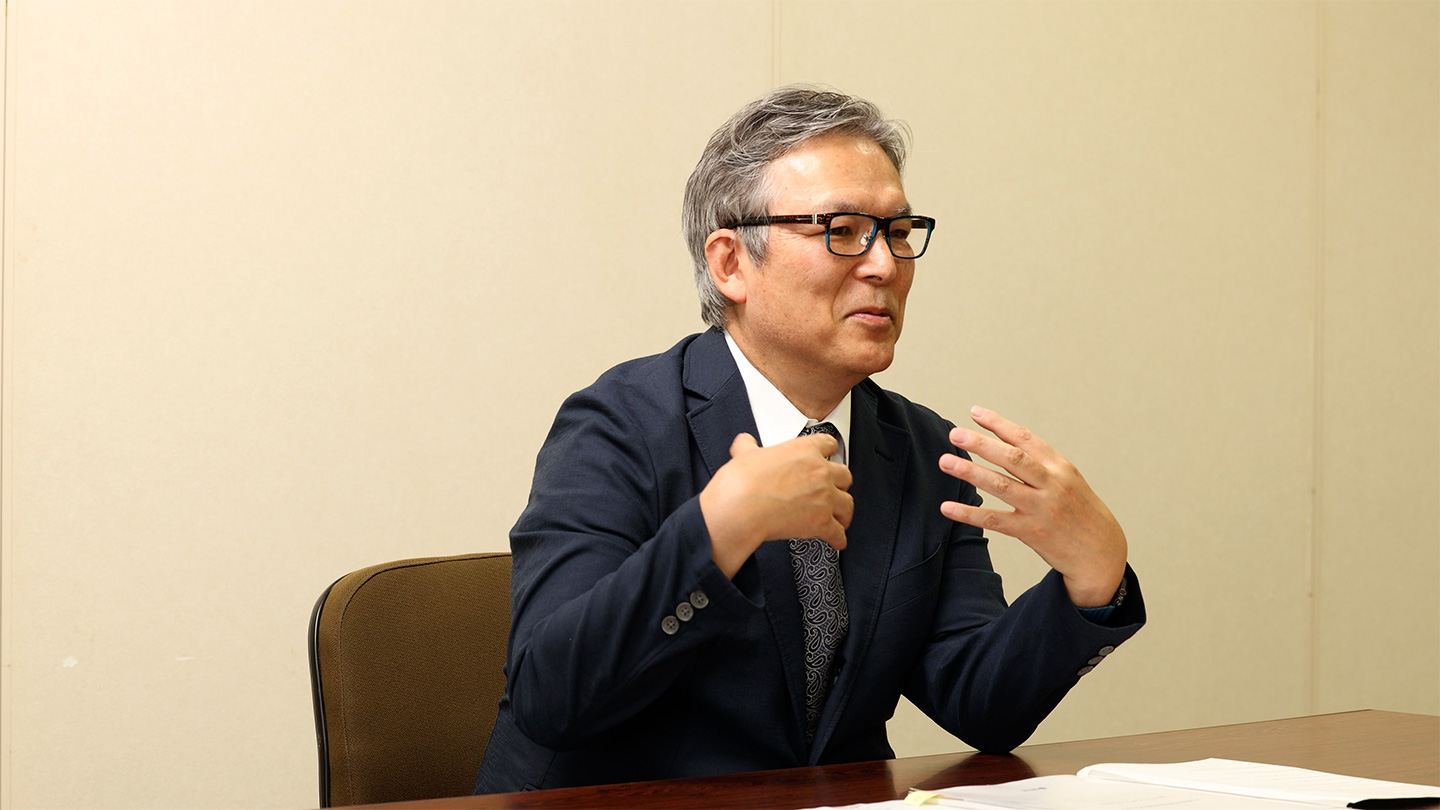
日本への帰国後、九州大学医学部呼吸器外科の助教授を経て、1995年から愛知県がんセンター中央病院胸部外科部長となった。
トランスレーショナル・リサーチに強く引き寄せられることになったのは、EFGR阻害薬『ゲフィチニブ(商品名イレッサ)がきっかけだった。ゲフィチニブは、がんの分子標的治療薬である。がん化やがん細胞の増殖に関わるタンパク質、酵素の分子などに「標的」を絞って、その働きを抑える。2002年、ゲフィチニブは「切除不能な進行・再発の非小細胞肺癌」への効果があるとして世界に先駆けて日本で承認された。
「イレッサは、ものすごく効く患者さんがいる一方、全く効かない人もいた。非喫煙者、女性、腺がん、アジア人に効きやすいことが言われていましたが、そのメカニズムはまったく不明でした」
光冨はアメリカ留学の経験から、肺がん手術で得た検体を保存、遺伝子解析を続けていた。2004年の五月に、〈非小細胞肺がん患者の一部にEFGR遺伝子変異があり、それがEFGR阻害薬のイレッサの効果を予測できるのでは〉という論文が発表された。
「その論文が出た後、色々と調べて行くとEFGRの遺伝子変異と見事に相関した」
近畿大学との縁が出来たのもこの頃だ。
「我々は実験的な検査を行い、EGFR遺伝子変異がある患者さんにイレッサを投与すると効果とよく相関することを経験しました。ある時、近大病院の中川和彦先生から、40代の女性患者さんの検体を検査して欲しいという依頼を受けたんです。当時、近大ではその検査をしていなかった」
「彼女は腹水と胸水が溜まっていたので進行した子宮がんとして治療を受けていたんですが効果があがらず、胸水のために。呼吸困難で困っておられました。その検体を父上が愛知県がんセンターにもってこられて調べたところ、EGFR遺伝子変異がみつかったのです。EGFRは変異はほぼ肺癌に特異的でなので、子宮がんでなく肺がんということがわかり、イレッサが効くだろうという連絡を入れました。近大の腫瘍内科でイレッサの服用を始めると、呼吸がすごく楽になったそうです。彼女からは年賀状を頂き、とても感謝してもらい嬉しかったことをよく憶えています。初めて自分の研究が人の役に立てたと思えました。」
光冨たちの論文もあって、2010年にイレッサの添付文書が〈切除不可能な肺がん全般〉から、〈EGFR遺伝子変異陽性の肺がん患者に限定する〉と変更されている。これによりイレッサの副作用を防ぐことになった。検査と治療をセットで行う「個別化医療」の走りである。
「現在の肺がん外科では、昔の背中を30センチほど大きく切って切除する手術から内視鏡やロボット(支援手術)といった傷を小さく、切除する肺もできる限り小さくするようなことが研究の主流です。だけどこのような研究では、治らないがんが治るようになるわけではありません。私は、肺がんの医師を目指していますし、その意味で外科も内科もないんです。外科医は手術もしますが、薬も投与できる。薬を投与して患者さんが良くなっていくのを見るのは嬉しいじゃないですか」と付け加えた。
トランスレーショナル・リサーチに強く引き寄せられることになったのは、EFGR阻害薬『ゲフィチニブ(商品名イレッサ)がきっかけだった。ゲフィチニブは、がんの分子標的治療薬である。がん化やがん細胞の増殖に関わるタンパク質、酵素の分子などに「標的」を絞って、その働きを抑える。2002年、ゲフィチニブは「切除不能な進行・再発の非小細胞肺癌」への効果があるとして世界に先駆けて日本で承認された。
「イレッサは、ものすごく効く患者さんがいる一方、全く効かない人もいた。非喫煙者、女性、腺がん、アジア人に効きやすいことが言われていましたが、そのメカニズムはまったく不明でした」
光冨はアメリカ留学の経験から、肺がん手術で得た検体を保存、遺伝子解析を続けていた。2004年の五月に、〈非小細胞肺がん患者の一部にEFGR遺伝子変異があり、それがEFGR阻害薬のイレッサの効果を予測できるのでは〉という論文が発表された。
「その論文が出た後、色々と調べて行くとEFGRの遺伝子変異と見事に相関した」
近畿大学との縁が出来たのもこの頃だ。
「我々は実験的な検査を行い、EGFR遺伝子変異がある患者さんにイレッサを投与すると効果とよく相関することを経験しました。ある時、近大病院の中川和彦先生から、40代の女性患者さんの検体を検査して欲しいという依頼を受けたんです。当時、近大ではその検査をしていなかった」
「彼女は腹水と胸水が溜まっていたので進行した子宮がんとして治療を受けていたんですが効果があがらず、胸水のために。呼吸困難で困っておられました。その検体を父上が愛知県がんセンターにもってこられて調べたところ、EGFR遺伝子変異がみつかったのです。EGFRは変異はほぼ肺癌に特異的でなので、子宮がんでなく肺がんということがわかり、イレッサが効くだろうという連絡を入れました。近大の腫瘍内科でイレッサの服用を始めると、呼吸がすごく楽になったそうです。彼女からは年賀状を頂き、とても感謝してもらい嬉しかったことをよく憶えています。初めて自分の研究が人の役に立てたと思えました。」
光冨たちの論文もあって、2010年にイレッサの添付文書が〈切除不可能な肺がん全般〉から、〈EGFR遺伝子変異陽性の肺がん患者に限定する〉と変更されている。これによりイレッサの副作用を防ぐことになった。検査と治療をセットで行う「個別化医療」の走りである。
「現在の肺がん外科では、昔の背中を30センチほど大きく切って切除する手術から内視鏡やロボット(支援手術)といった傷を小さく、切除する肺もできる限り小さくするようなことが研究の主流です。だけどこのような研究では、治らないがんが治るようになるわけではありません。私は、肺がんの医師を目指していますし、その意味で外科も内科もないんです。外科医は手術もしますが、薬も投与できる。薬を投与して患者さんが良くなっていくのを見るのは嬉しいじゃないですか」と付け加えた。
The beginning of my connection with Kindai University was through ‘Iressa.’
MITSUDOMI Tetsuya’s deep attraction to translational research was sparked by the advent of the EGFR inhibitor gefitinib (trade name Iressa). Gefitinib is a molecularly targeted cancer drug designed to block the activity of proteins and enzymes involved in carcinogenesis and cancer cell proliferation. In 2002, Japan became the first country in the world to approve gefitinib for the treatment of “unresectable, advanced, or recurrent non-small cell lung cancer.”“Iressa produced striking responses in some patients, while showing no effect at all in others,” MITSUDOMI recalls. At the time, it was observed that non-smokers, women, patients with adenocarcinoma, and Asian populations tended to respond better, but the mechanism behind this was completely unknown.”
Drawing on his experience in the United States, MITSUDOMI had continued preserving surgical specimens from lung cancer patients and subjecting them to genetic analysis. Then, in May 2004, a groundbreaking paper was published showing that “a subset of non-small cell lung cancer patients harbor EGFR mutations, and these mutations may predict responsiveness to EGFR inhibitors such as Iressa.”
“After that paper came out, we conducted our own analyses and found a striking correlation between EGFR mutations and treatment response,” MITSUDOMI recalls.
It was around this time that his ties with Kindai University began to take shape.
“We conducted experimental testing and observed that when gefitinib was administered to patients with EGFR gene mutations, its effects correlated remarkably well. At one point, Dr. NAKAGAWA Kazuhiko from Kindai University Hospital contacted me, asking if I could test the specimen of a female patient in her 40s. At that time, Kindai University did not yet have the capability to perform such testing.”
“The patient had been treated for what was believed to be advanced uterine cancer, with ascites and pleural effusion. But the treatments brought little effect, and she was struggling with severe shortness of breath due to the fluid in her lungs. Her father carried the specimen to the Aichi Cancer Center, where I was working, and when we examined it, we discovered an EGFR mutation. Since EGFR mutations are almost specific to lung cancer, we realized it was not uterine cancer after all, but lung cancer. We contacted Kindai to say that Iressa would likely work. Once she began taking Iressa at the Department of Medical Oncology there, her breathing improved dramatically. Later, I even received a New Year’s card from her. I still remember how grateful she was, and how deeply it moved me. For the first time, I felt my research had truly helped a person.”
Thanks in part to MITSUDOMI and his colleagues’ work, the drug label for Iressa was revised in 2010: instead of being indicated for “unresectable lung cancer in general,” its use was restricted to “patients with EGFR mutation–positive lung cancer.” This change reduced the risk of severe side effects and marked the beginning of what is now called personalized medicine, in which genetic testing is paired with tailored therapy.
“Today, in lung cancer surgery, research has shifted from the old style of cutting 30-centimeter incisions across the back, to minimally invasive approaches using endoscopes or robot-assisted surgery. These minimize both the incision size and the portion of lung removed. But let’s be honest—such innovations do not suddenly make incurable cancers curable. I have always aspired to be a physician for lung cancer patients, and in that sense, there is no strict boundary between surgery and internal medicine. Surgeons not only operate, but we can also administer drugs. And when I give a patient medicine and see them improve—that brings me joy,” he adds with a quiet smile.
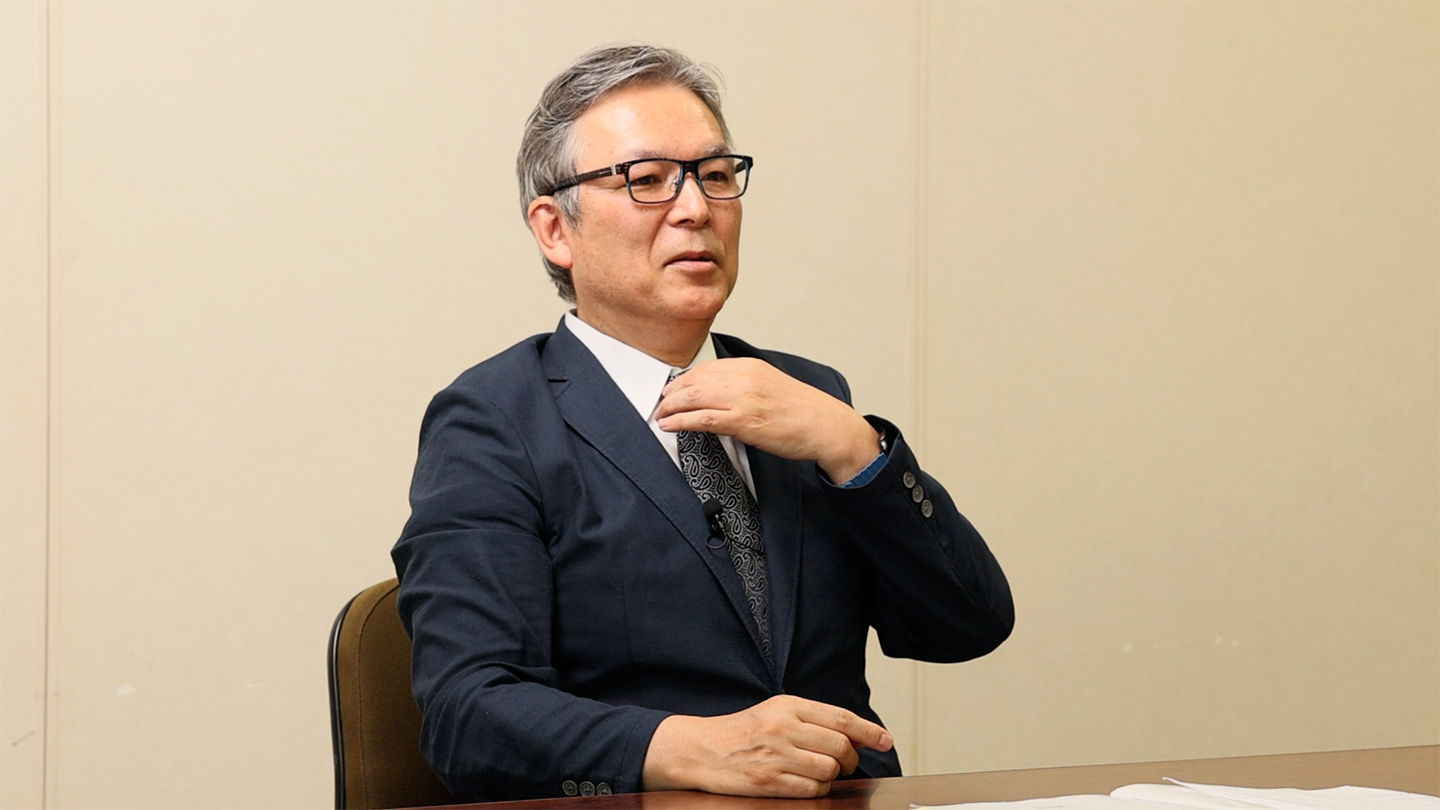
「(愛知県)がんセンターには、大学からレジデントが派遣されて来るんです。こいつはなかなか出来るから留学させたらどうかと思っていると、2年ほどで帰ってしまう。臨床、研究だけでなく、大学で次世代に自分の経験を伝えたいという気持ちが大きくなっていったんです」
そんな光冨に声を掛けたのが、近畿大学医学部腫瘍内科学教室主任教授だった中川和彦だった。
「外科学講座の中に呼吸器外科部門が出来ると言うんです。そのときぼくは55歳だったんです。定年前まだ10年ある。10年あれば人を育てることができると」
近畿大学医学部外科学教室(呼吸器外科部門)の主任教授に就任したのは2012年のことだ。
2014年から2018年まで日本肺癌学会理事長、そして2019年から2021年までは世界肺癌学会(IASLC)理事長などの日本のみならず世界規模の組織で要職を務めた光冨に、どのような人間が呼吸器外科に向いているのかと聞いた。
「まずがんに興味があるという人。がんは死亡原因1位。その中でも肺がんは1位。1番必要性が高いんです。その肺がんをなんとかしたいという方で外科志望ならば呼吸器外科ですよね」
そして内科との連携も必須である。
「腫瘍内科はもちろん薬物治療が中心。外科医も手術だけでなく薬物の知見も必要になってきた。近年、マルチディシプリナリーチーム(MDT、多職種チーム)ということを言われるようになっています。腫瘍内科、呼吸器内科、呼吸器外科、放射線治療科、放射線診断科、病理、看護師、理学療法士などが集まって1人の患者さんのためにディスカッションする。大切なのは患者さんが中心にいて、様々な立場の人間が意見を交わすこと」
2022年3月末で教授は退任、現在は和泉市立総合医療センター総長、近畿大学医学部革新医学講座特別招聘研究教授などを兼任している。
近畿大学でやり残したことはありますかと最後に聞くと、「新病院で働くことができなかったことかな」と冗談っぽく笑った。
そんな光冨に声を掛けたのが、近畿大学医学部腫瘍内科学教室主任教授だった中川和彦だった。
「外科学講座の中に呼吸器外科部門が出来ると言うんです。そのときぼくは55歳だったんです。定年前まだ10年ある。10年あれば人を育てることができると」
近畿大学医学部外科学教室(呼吸器外科部門)の主任教授に就任したのは2012年のことだ。
2014年から2018年まで日本肺癌学会理事長、そして2019年から2021年までは世界肺癌学会(IASLC)理事長などの日本のみならず世界規模の組織で要職を務めた光冨に、どのような人間が呼吸器外科に向いているのかと聞いた。
「まずがんに興味があるという人。がんは死亡原因1位。その中でも肺がんは1位。1番必要性が高いんです。その肺がんをなんとかしたいという方で外科志望ならば呼吸器外科ですよね」
そして内科との連携も必須である。
「腫瘍内科はもちろん薬物治療が中心。外科医も手術だけでなく薬物の知見も必要になってきた。近年、マルチディシプリナリーチーム(MDT、多職種チーム)ということを言われるようになっています。腫瘍内科、呼吸器内科、呼吸器外科、放射線治療科、放射線診断科、病理、看護師、理学療法士などが集まって1人の患者さんのためにディスカッションする。大切なのは患者さんが中心にいて、様々な立場の人間が意見を交わすこと」
2022年3月末で教授は退任、現在は和泉市立総合医療センター総長、近畿大学医学部革新医学講座特別招聘研究教授などを兼任している。
近畿大学でやり残したことはありますかと最後に聞くと、「新病院で働くことができなかったことかな」と冗談っぽく笑った。
What matters most is that the patient remains at the center, while people from various fields exchange their views.
“At the Aichi Cancer Center, residents are regularly dispatched from universities. Some of them are very capable, and just when I thought they should be sent abroad for further training, they would return after only two years. Over time, I felt a stronger desire not only to pursue clinical practice and research myself, but also to pass on my experience to the next generation within a university setting.”It was around this time that MITSUDOMI was approached by NAKAGAWA Kazuhiko, then Chief Professor of the Department of Medical Oncology at Kindai University Faculty of Medicine.
“He told me that a new Division of Thoracic Surgery would be established within the Department of Surgery. At the time, I was 55 years old. I thought, with ten years left before retirement, I would still have enough time to train young people.”
In 2012, he was appointed Chief Professor of the Division of Thoracic Surgery in the Department of Surgery at Kindai University Faculty of Medicine.
From 2014 to 2018, he served as President of the Japan Lung Cancer Society, and from 2019 to 2021, as President of the International Association for the Study of Lung Cancer (IASLC)— taking on leadership roles not only in Japan but also on the global stage.
When asked what kind of person is best suited for thoracic surgery, MITSUDOMI answered:
“First, someone who is genuinely interested in cancer. Cancer remains the leading cause of death, and lung cancer is the most common of all. It is where the need is greatest. If you want to tackle lung cancer and are aiming to be a surgeon, then naturally, thoracic surgery is the natural choice.”
He also stressed the importance of collaboration with internal medicine.
“Medical oncology is, of course, centered on drug therapy. But even surgeons can no longer rely solely on surgery—they must also acquire knowledge of pharmacological treatments. In recent years, the concept of the multidisciplinary team, or MDT, has gained prominence. Medical oncologists, pulmonologists, thoracic surgeons, radiation oncologists, radiologists, pathologists, nurses, and physical therapists all come together to discuss the best approach for each patient. What matters most is that the patient is at the center, while professionals from diverse disciplines exchange their views.”
At the end of March 2022, MITSUDOMI stepped down from his professorship. Today, he continues to serve as President of the Izumi City General Medical Center and as a Specially Invited Professor at the Department of Innovative Medicine, Kindai University Faculty of Medicine, among other roles.
When asked in closing whether there was anything he had left undone at Kindai University, he laughed lightly and replied, “Perhaps only that I never had the chance to work in the new hospital.”